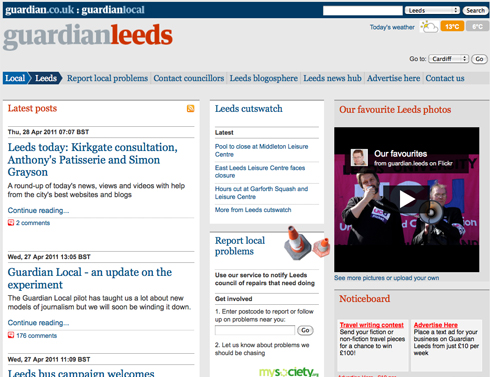Martin Moore is director of the Media Standards Trust. This post first appeared on his blog.
Last week’s Future of News and Civic Media conference organised by the Knight Foundation in Boston (#fncm) was that rare thing – a #futureofnews conference where I came away feeling quite inspired and with a renewed optimism about the future of news (though not as we’ve known it).
In particular, I learnt that there are growing numbers of people in the States who have moved beyond the increasingly circular debates about how to sustain the incumbent news industry. Instead, they are working on lots of projects that use the internet and mobile to provide the public with timely information, in an accessible way. In other words, deliver what journalism did – or was meant to – deliver, without calling it journalism.
Take, for example, this year’s Knight News Challenge Winners (of which Paul Bradshaw tweeted “Very impressed… easily the strongest year yet”). Only one of the twelve winners is directly focused on addressing the travails of the existing news industry – and even this in a very non-traditional way. PRX StoryMarket will provide a way for the public to pitch and pay for news stories on US public radio. It is based on the ‘spot.us‘ model (a Knight winner in 2008), but focused on radio.
Nine others (making up over 80 per cent of the prize in terms of funding) are about enabling and enhancing information flows within communities and hardly mention the word ‘journalism’.
Citytracking will “make municipal data easy to understand with software that allows the users to transform web data into maps and graphics” (by the renowned Stamen Design – see this map for example).
The Cartoonist will create a free tool that allows people to produce cartoon-like current event games
Local wiki will “help people learn and share community news and knowledge through the creation of local wikis”. The two young guys who won the award started a local wiki in Davis, California six years ago which has grown to be the biggest media source in the town.
GoMap Riga will “inspire residents to become engaged in their community by creating an online map where people can browse and post their own local news and information”. Again, this is about people – the community – putting up and reading content about their neighbourhood (run by a tremendous Latvian duo – Kristofs Blaus and Marcis Rubenis).
Front Porch Forum will help residents connect with “their community by creating open-source software for neighbourhood news”. Essentially micro local private sites based around a handful of blocks.
Stroome allows people to edit video online, for free, within their browser.
CitySeed will ‘develop mobile applications that enable people to geotag ideas for improving neighbourhoods’. The example they give is of someone geotagging a location for a community garden.
Tilemapping will enable residents to ‘learn about local issues by creating a set of easy-to-use tools for crafting hyperlocal maps’.
WindyCitizen’s real time ads will ‘help online start-ups generate revenue and become sustainable by creating enhanced software that produce real-time ads’. This may well help journalists and the news industry, but notice there’s no mention of news outlets, just ‘online start-ups’.
Of the final two, one enhances traditional reporting (Order in the Court 2.0), and the other will use social media to report on a US battalion in Afghanistan (One-Eight).
And it wasn’t just the Knight News Challenge winners that eschewed traditional ideas of journalism. Most of the conference was spent talking about new media tools that served a public purpose – or “civic media” as its termed in the US. News is a part of this, but only in the sense that there is a public value to news.
We saw a demo by SourceMap – a site that helps you map where things come from and what they are made of; and of boy.co.tt – a site that makes consumer boycotts much more targeted. We were introduced to streetblogs – a ‘daily news source, online community and political mobilizer for the Livable Streets movement’; seeclickfix – like MySociety’s fixmystreet; transparencydata.com from the Sunlight Foundation; groundcrew.us – that uses GPS and mobile communication to coordinate volunteering, events, political canvassing etc.; and many other sites and services that enhance communication, focus citizen activism, bring people closer to public authorities, and fulfil those perennial twin goals of greater transparency and accountability.
There is lots of development already being done in the US with public data. In Boston, the release of real time transport data by the Massachusetts Department of Transportation (MassDOT) in November 2009 generated a slew of creative hacking (see this Wall Street Journal piece). The same is now happening in New York. There is also an open wiki for helping collaboration and gathering best practice at http://wiki.openmuni.org/.
Much of the new development is emerging from US universities, such as MIT. At the MIT Media Lab’s Center for the Future of Civic Media, for example. It defines civic media as “any form of communication that strengthens the social bonds within a community or creates a strong sense of civic engagement among its residents. Civic media goes beyond news gathering and reporting”.
We in the UK are now expecting ‘a tsunami of data’ to flow from government thanks to the Big Society declaration (including a new ‘right to data’). Some people have begun using the data for development – such as the live train map for the London underground. But it is well worth casting our eyes across the Atlantic – we can learn alot from current developments in the US.

